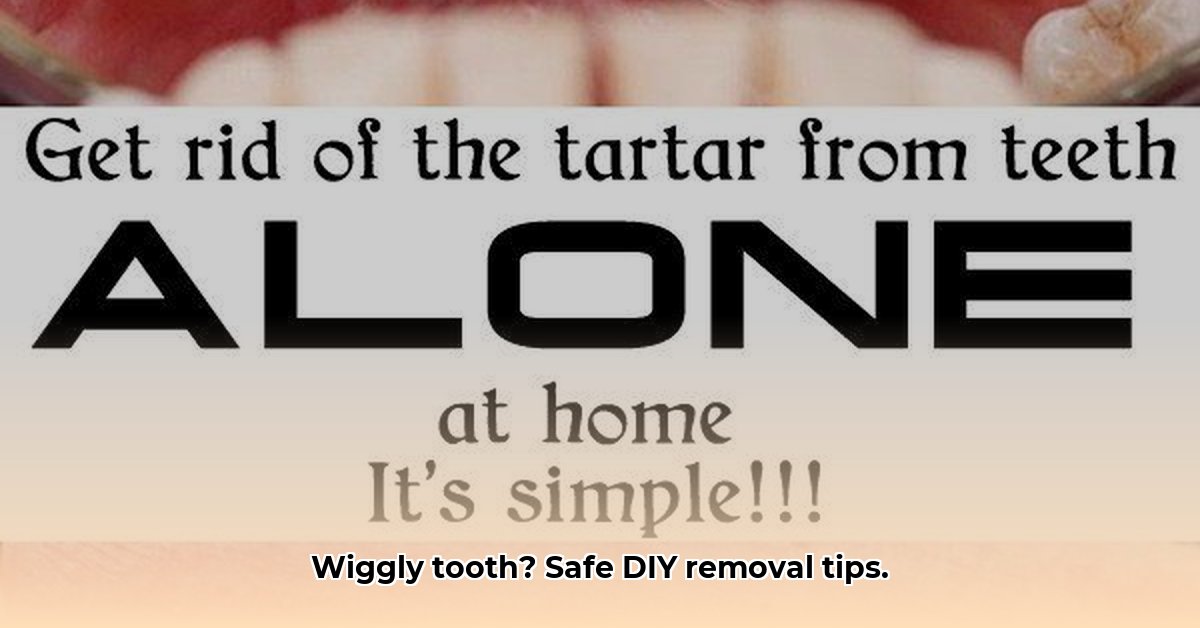Got a wobbly tooth? Whether it’s your own or your child’s, it’s natural to wonder what to do. This guide covers everything about loose teeth, from causes and care to when professional help is absolutely essential. We’ll debunk the myth of DIY tooth extraction and empower you to make informed decisions for your oral health.
Understanding Loose Teeth: Why, When, and What to Do
Loose teeth are a normal part of childhood, making way for permanent teeth. But for adults, they signal a potential problem like gum disease or an injury. Let’s explore the causes, symptoms, and best practices for managing loose teeth.
Why Teeth Get Loose
- Kids: Baby teeth naturally loosen and fall out as permanent teeth push through. This process usually starts around age 6.
- Adults: A loose tooth in an adult is never normal and suggests an underlying issue, such as:
- Gum Disease (Periodontal Disease): Infection damages the tissues supporting teeth.
- Injury: A blow to the mouth can loosen teeth.
- Osteoporosis: This condition can weaken bones, including the jawbone, affecting tooth stability.
- Bruxism (Teeth Grinding): Excessive grinding can loosen teeth over time.
Recognizing the Signs
A wiggly tooth is the most obvious sign, but you might also notice:
- Redness or Swelling: Around the gum line near the loose tooth.
- Pain or Discomfort: This could signal an infection or other dental issues.
- Bleeding: Especially after wiggling the tooth.
Caring for a Loose Tooth at Home
If it’s a very loose baby tooth:
- Gentle Wiggling: Encourage your child to gently wiggle the tooth with their tongue or a clean finger.
- Maintain Oral Hygiene: Continue brushing and flossing gently around the loose tooth.
- Healthy Diet: Crunchy foods like apples and carrots can help the process naturally.
When to See a Dentist
- Persistent Loose Tooth: If a baby tooth remains loose for several weeks without falling out.
- Pain, Swelling, or Bleeding: These warrant a dental check-up, especially if there are signs of infection like pus or a fever.
- Loose Adult Tooth: Always consult a dentist immediately.
- Injury: After any trauma to the mouth.
Safe at Home? Debunking DIY Tooth Extraction
Pulling a tooth at home might seem tempting, but it’s fraught with risks. Let’s explore why professional dental care is always the safest option.
The Dangers of DIY
- Infection: Creating an open wound in your mouth increases the risk of a serious infection.
- Nerve Damage: You could accidentally damage nerves, leading to numbness, tingling, or chronic pain.
- Excessive Bleeding: Controlling bleeding can be difficult without professional tools and expertise. Some individuals may have underlying bleeding disorders that complicate matters further.
- Damage to Surrounding Teeth: You risk damaging adjacent teeth or the underlying bone.
- Dry Socket: A painful condition where the blood clot protecting the extraction site is dislodged. Ongoing research suggests certain genetic predispositions may increase the risk of dry socket formation.
- Broken Teeth/Leftover Roots: Without proper tools, you could break the tooth or leave fragments behind.
- Bone Damage/Sinus Issues: This is a serious complication, especially with upper teeth, which are in close proximity to the sinuses.
Why the Dentist is Essential
Dentists have the:
- Sterile Environment: Minimizing infection risk.
- Specialized Tools: Ensuring safe and complete extraction.
- Expertise: To manage complications and provide appropriate aftercare.
Step-by-Step Guide: Managing a Very Loose Baby Tooth (If Appropriate)
If a baby tooth is extremely loose and about to fall out on its own, you might gently assist, but only under these specific circumstances:
- Spotless Hands: Wash your hands thoroughly.
- Gentle Wiggling: Encourage your child to wiggle the tooth with their tongue or clean finger.
- Gauze (If Necessary): If the tooth is barely attached, use clean gauze to gently grip and pull straight out. No twisting or yanking.
- Comfort Measures: A cold compress can help reduce any discomfort. Over-the-counter pain relievers can be used as directed by a doctor or pharmacist, although they are often unnecessary for naturally loose teeth.
- Post-Extraction Care: Bite down on clean gauze to stop bleeding. After 24 hours, rinse gently with warm salt water. Avoid straws and vigorous rinsing for a few days.
When to Stop and See a Dentist:
- Any Resistance: If the tooth doesn’t come out easily with gentle pressure.
- Excessive Bleeding: More than a few minutes of bleeding.
- Significant Pain: Beyond mild discomfort.
- Signs of Infection: Redness, swelling, pus, or fever.
- Permanent Tooth: Never attempt to remove a permanent tooth at home.
Post-Extraction Care: Promoting Healing and Comfort
Whether the tooth fell out naturally or with minimal assistance, proper aftercare is important.
- Bleeding Control: Bite down on clean gauze for 20-30 minutes. If bleeding persists, see a dentist.
- Salt Water Rinse: After 24 hours, rinse gently with warm salt water a few times a day. This helps keep the area clean and may reduce the chances of infection, although research on its effectiveness is ongoing.
- Soft Foods: Stick to soft foods for a few days to avoid irritating the empty socket.
- Avoid Disturbance: Don’t pick at the area or use straws, as this can dislodge the blood clot and delay healing.
Disclaimer: This information is for general knowledge and does not replace professional dental advice. Consult a dentist for personalized guidance and to address any specific concerns. Dental practices and research are constantly evolving, so always seek up-to-date information from qualified professionals.
- Your Perfect Bento Box Bag For Fresh And Tidy Meals - December 2, 2025
- Korean Meal Prep Made Easy For Delicious Weekday Meals - December 1, 2025
- Korean Food Meal Prep Makes Flavorful Weekday Meals Simple - November 30, 2025










